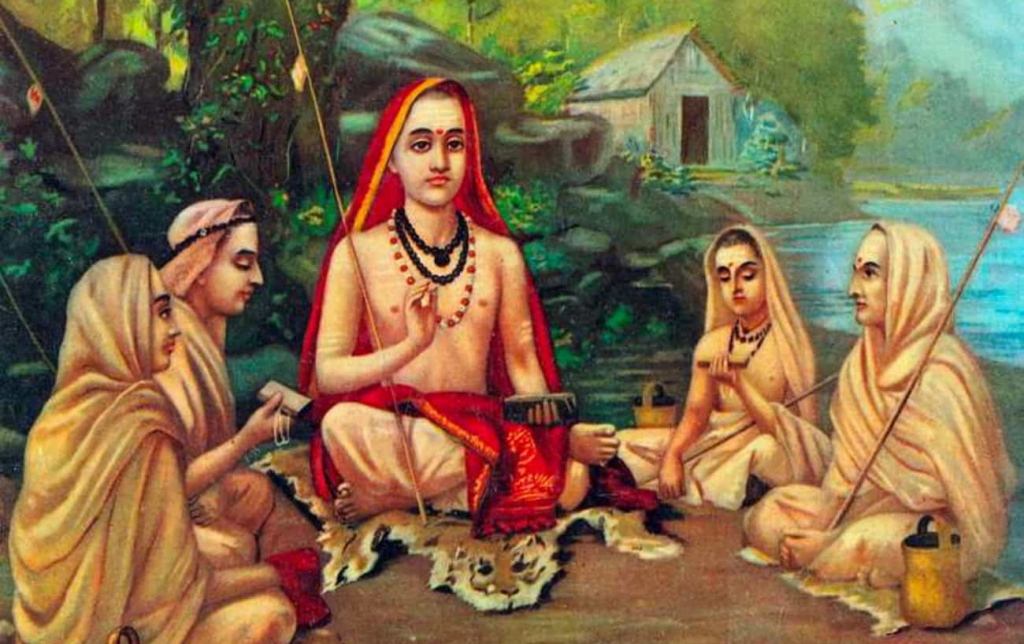Are you yearning for a deeper connection to the universe? A sense of profound peace that transcends the mundane? Advaita Vedanta, the ancient Indian philosophy of non-duality, might hold the key to your spiritual awakening. In this guide, we’ll embark on a journey to explore the profound teachings of Advaita, offering insights and practices to help you experience the oneness that lies at the heart of existence.
What is Advaita Vedanta?
Advaita Vedanta, often simply referred to as Advaita, translates to “non-duality.” At its core, this philosophy posits that the ultimate reality is Brahman, the absolute consciousness or awareness that pervades everything. The individual self, or Atman, is not separate from Brahman but rather an expression of it. In essence, we are all interconnected, and the perceived separation between self and others, subject and object, is an illusion.
The Journey to Self-Realization
Advaita is not merely a set of intellectual concepts but a path of self-inquiry leading to the realization of our true nature. This journey involves:
- Self-Inquiry (Atma Vichara): This is the cornerstone of Advaita practice. It involves turning our attention inward and questioning the nature of our existence. Who am I? What is the source of my thoughts and feelings? By persistently asking these questions, we begin to peel back the layers of illusion and glimpse the underlying reality.
- Discrimination (Viveka): This involves discerning the eternal, unchanging reality (Brahman) from the transient, ever-changing world of appearances. We learn to differentiate between the real and the unreal, the permanent and the impermanent.
- Renunciation (Vairagya): This is not about giving up worldly possessions but rather cultivating detachment from the outcomes of our actions and the impermanent nature of things. When we let go of our attachment to the ego and its desires, we create space for the true self to emerge.
- Self-Surrender (Sharanagati): This is the final step, where we surrender our individual will to the divine will, recognizing that we are not the doer but rather instruments of a greater force. This surrender leads to a profound sense of peace and liberation.
Practices to Embark on Your Advaita Journey
- Meditation: Regular meditation practice helps quiet the mind and cultivate inner stillness. This stillness is essential for self-inquiry and recognizing our true nature.
- Study of Scriptures: The Upanishads, the Bhagavad Gita, and other Advaita texts offer profound insights into the nature of reality and the path to self-realization. Studying these texts can deepen your understanding of Advaita philosophy.
- Satsang: Satsang, or gathering in the company of spiritual seekers, can provide support, inspiration, and guidance on your journey. The collective energy of a group can accelerate your spiritual growth.
- Selfless Service: Engaging in selfless service (karma yoga) can help purify the mind and cultivate detachment from egoic desires. When we act without attachment to the fruits of our actions, we experience a deeper connection to the divine.
The Fruits of Advaita
The realization of Advaita brings about profound transformation in our lives:
- Liberation from Suffering: When we recognize that our true nature is not bound by the limitations of the ego, we are freed from the cycle of suffering caused by attachment, aversion, and ignorance.
- Inner Peace and Joy: The experience of oneness brings a deep sense of peace and joy that transcends external circumstances.
- Expanded Consciousness: Advaita expands our consciousness beyond the boundaries of the individual self, allowing us to experience the interconnectedness of all things.
- Compassion and Love: When we see ourselves in others, our hearts naturally open to compassion and unconditional love.
Navigating Challenges on the Path
The journey to Advaita is not without its challenges. You may encounter doubts, resistance from the ego, or periods of dryness and frustration. It is important to remember that these are all part of the process. Patience, perseverance, and unwavering faith in the path are essential.
Embrace the Oneness
Advaita offers a profound path to spiritual awakening and liberation. By engaging in self-inquiry, cultivating detachment, and surrendering to the divine will, you can experience the oneness that lies at the heart of existence. As you embark on this journey, remember that the ultimate goal is not to acquire something new but to recognize the truth that has always been within you.
In the Words of the Masters
“The world is illusory, only Brahman is real; Brahman is the world.” – Adi Shankara
“You are not a drop in the ocean. You are the entire ocean in a drop.” – Rumi
“The highest truth is not a truth beyond all others; it is a truth which includes all others.” – Sri Nisargadatta Maharaj
The Path Continues
The journey to Advaita is an ongoing process of self-discovery and unfolding. It is a journey of awakening to our true nature, the timeless, boundless consciousness that we are. As you continue on this path, may you experience the profound peace, joy, and liberation that Advaita offers.
Additional Resources
- Books:
- “The Ashtavakra Gita”
- “Be As You Are” by Ramana Maharshi
- “I Am That” by Nisargadatta Maharaj


